Saskatchewan |
|
|
|
| Übersicht – Contents: | |
Diese Seite ist Teil des Projektes
Saskatchewan |
|
|
|
| Übersicht – Contents: | |
Flagge – Flag: |
|
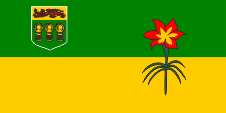 |
Provinzflagge – flag of the province, Seitenverhältnis – ratio = 1:2, Quelle/Source: Corel Draw 4   |
historische Flaggen – historical Flags: |
|
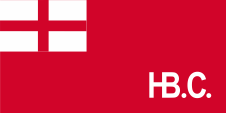 |
1682–1707, |
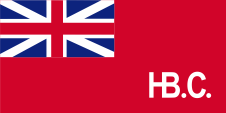 |
1707–1801, |
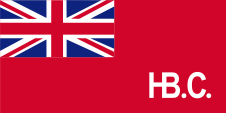 |
1801–1896, |
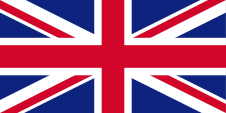 |
1896–1965, Union Flag → quasi Nationalflagge/national flag, Flagge von Großbritannien – flag of United Kingdom, Seitenverhältnis – ratio 1:2, Quelle/Source, nach/by: Wikipedia (EN), thecanadianencyclopedia.ca    |
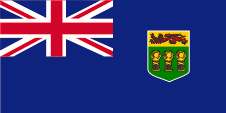 |
1906–1965, Flagge der Regierung (Staatsflagge) – flag of the government (state flag), Seitenverhältnis – ratio = 1:2, Quelle/Source, nach/by: World Statesmen |
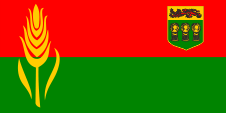 |
1965–1967, Provinzflagge – flag of the province, Seitenverhältnis – ratio = 1:2, Quelle/Source, nach/by: World Statesmen |
Bedeutung/Ursprung der Flagge – Meaning/Origin of the Flag: |
|
| Die heutige Flagge von Saskatchewan wurde am 22.09.1969 angenommen. Sie zeigt in zwei waagerechten Streifen die Farben Grün und Gelb. Am Mast befindet sich im grünen Streifen das Wappenschild von Saskatchewan, im fliegenden Ende, in der Mitte der Flagge, eine rote Blume. Die Farben der Flagge sind vom Wappen der Provinz entlehnt, wobei Gelb für die Weizenfelder steht und Grün für die Wälder. | The
today's flag
of Saskatchewan was adopet on 22nd of September in 1969. It shows in two horizontal stripes the colours green and yellow. Near the pole is positioned in the green stripe the blazon of Saskatchewan, in the flying end in the middle of the flag a red flower. The colours are borrowed from the coat of arms of the province. Yellow stands for the wheat fields and green for the woods. |
| Bis 1922 hätte von den Dienststellen der Provinzen offiziell der britische Union Jack, die sogenannte Royal Union Flag, verwendet werden müssen, oder aber (ab 1922 im Prinzip nur noch) die kanadische blaue Dienstflagge, der typische Britische Blue Ensign, mit dem Wappenschild Kanadas im wehenden Ende. Dennoch hatten die Provinzbehörden eigene Siegel und später auch Wappen, die eigenmächtig im wehenden Ende auf der blauen Dienstflagge platziert wurden. Für dieses Verfahren hätte eine Genehmigung der britischen Behörden vorliegen müssen, was jedoch nicht der Fall war, aber toleriert wurde. Privatpersonen hatten den Union Jack zu verwenden und ab 1892 den sog. Red Ensign, die rote Version der kanadischen Flagge mit dem Union Jack in der Oberecke und dem Wappen Kanadas im wehenden Ende. | Until
the year 1922 there had officially been used, the British Union Jack, the so-called
Royal Union Flag, by the departments of the provinces, or (from 1922 nearly only) the Canadian
blue official flag, the typical British Blue Ensign, with the coat of arms of
Canada in the flying end. Nevertheless, the provincial authorities had their own seals and later also coats of arms, which were unauthorized placed in the flying end of the blue official flag. A permit should have been approved by the British authorities for this procedure, this was not the case, but was tolerated. Private individuals had to use the Union Jack and from 1892 the so-called Red Ensign, the red version of the Canadian flag with the Union Jack in the upper corner and the coat of arms of Canada in the flying end. |
| Im Zuge der allmählichen Trennung Kanadas von Großbritannien verlor der Blue Ensign als amtliches, britisches Kennzeichen seine Bedeutung und man ersetzte ihn durch neue Provinzflaggen, die von Behörden und Dienststellen der Provinzen und auch von Privatpersonen verwendet werden dürfen. So führte Saskatchewan 1965 eine neue Flagge ein. | In the course of the gradual separation of Canada from the United Kingdom the Blue Ensign as an official British flag lost its meaning and became replaced by new provincial flags, which may be used by authorities and departments of the provinces and also by private individuals. In this way, Saskatchewan introduced a new flag in 1965. |
| Sie zeigte zwei waagerechte Streifen in Rot und Grün, das Wappen am wehenden Ende oben im roten Streifen und am Mast eine stilisierte Getreideähre. Sie wurde 1967 durch das heutige Modell abgelöst. | It showed two horizontal stripes in red and green, the coat of arms at the top in the flying end of the red stripe and at the flagpole a stylized grain ear. It was replaced in 1967 by the today's model. |
| Quelle/Source: Flaggen Enzyklopädie, World Statesmen | |
Wappen – Coat of Arms: |
|
 |
seit/since 1906, Wappenschild von Saskatchewan – escutcheon of Saskatchewan, Quelle/Source: Corel Draw 4 |
Bedeutung/Ursprung des Wappens – Meaning/Origin of the Coat of Arms: |
|
| Es gibt ein reguläres Wappen für Saskatchewan, mit Postament, Schildhaltern, einer Wappenkrone und dem Motto. Hier dargestellt ist nur der zentrale Teil des Wappens, der Wappenschild. | There is a regular coat of arms for Saskatchewan, with a console, shield holders (supporters), withe a crest and the motto. Here is only depicted the central part of the coat of arms, the escutcheon. |
| Das Wappenschild von Saskatchewan zeigt im oberen Teil einen roten britischen Löwen auf Gold. Der untere Teil des Wappenschilds ist grün mit drei Getreidegarben darauf. | The
escutcheon of Saskatchewan shows in the upper part a red British lion on gold. The lower part of the blazon is green with three grain sheafs on it. |
| Quelle/Source: Volker Preuß | |
Landkarte – Map: |
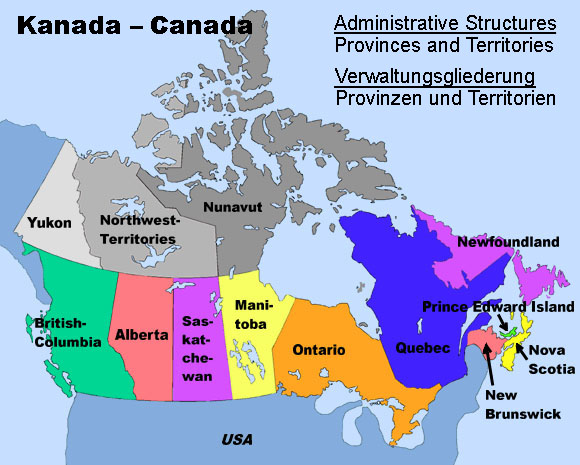 |
| Landkarte/Map: Volker Preuß |
Zahlen und Fakten – Numbers and Facts: |
|
|
|
|
|
|
|
|
|
|
|
|
|
|
|
|
|
Geschichte: |
|
ca. 30.000 Jahre v. Chr. · erste Besiedlung durch Ureinwohner ca. 8.000 Jahre v. Chr. · Besiedlung durch Indianerstämme der Assiniboine, Blackfoot und Cree 17. Jhd. · französische und englische Pelzhändler streifen durch das heutige Saskatchewan 1670 · das heutige Saskatchewan wird als Rupertsland von der Hudson's Bay Company erworben 1869 · die Hudson's Bay Company (HBC) überträgt alle ihre territorialen und Hoheitsrechte an das britische Dominion Kanada 1870 · Bildung der Nordwest-Territorien aus den Gebieten der HBC (Rupertsland und Nordwestliches Territorium) 1882 · Gründung von Saskatchewan als Distrikt der Nordwest-Territorien (Hauptstadt Battleford) 1883 · Bildung der Territorien Alberta, Athabaska, Saskatchewan und Assiniboia durch Herauslösung aus den Nordwest-Territorien 1905 · Saskatchewan wird durch Anschluss von Assiniboia und Teilen Athabaskas vergrößert, und als Provinz an das Dominion Kanada angeschlossen, Hauptstadt wird Regina (ehemalige Hauptstadt von Assiniboia) |
History: |
|
ca. 30.000 years B.C. · first settlement by natives ca. 8.000 years B.C. · settlement by Indian tribes of the Assiniboine, Blackfoot and Cree 17. Jhd. · French and English fur traders range through the today's Saskatchewan 1670 · the today's Saskatchewan gets purchased as Rupertsland by the Hudson's Bay Company 1869 · the Hudson's Bay Company (HBC) cedes all its territorial rights and prerogatives to the British Dominion of Canada 1870 · formation of the Northwest Territories from the former properties of the HBC (Rupertsland and Northwestern Territories) 1882 · establishment of Saskatchewan as a District of the Northwest Territories (capital Battleford) 1883 · establishment of the Territories Alberta, Athabaska, Saskatchewan and Assiniboia by dividing off the Northwest Territories 1905 · Saskatchewan gets enlarged by annexion of Assiniboia and parts of Athabaska and joines as province into the Dominion of Canada, capital becomes Regina (former capital of Assiniboia) |
| Quelle/Source: Atlas zur Geschichte, World Statesmen, Wikipedia (D), Discovery '97 |
Ursprung des Landesnamens – Origin of the Country's Name: |
|
| Der Name der Provinz geht auf den Saskatchewan River zurück. Die Cree-Indianer nennen ihn kisiskāchiwani-sīpiy, was mit "schnell fließender Fluss" übersetzt wird. | The name of the province goes back to the Saskatchewan River. The Cree Indians call it kisiskāchiwani-sīpiy, which is to translate as "fast flowing river". |
| Quelle/Source: Wikipedia (D) | |